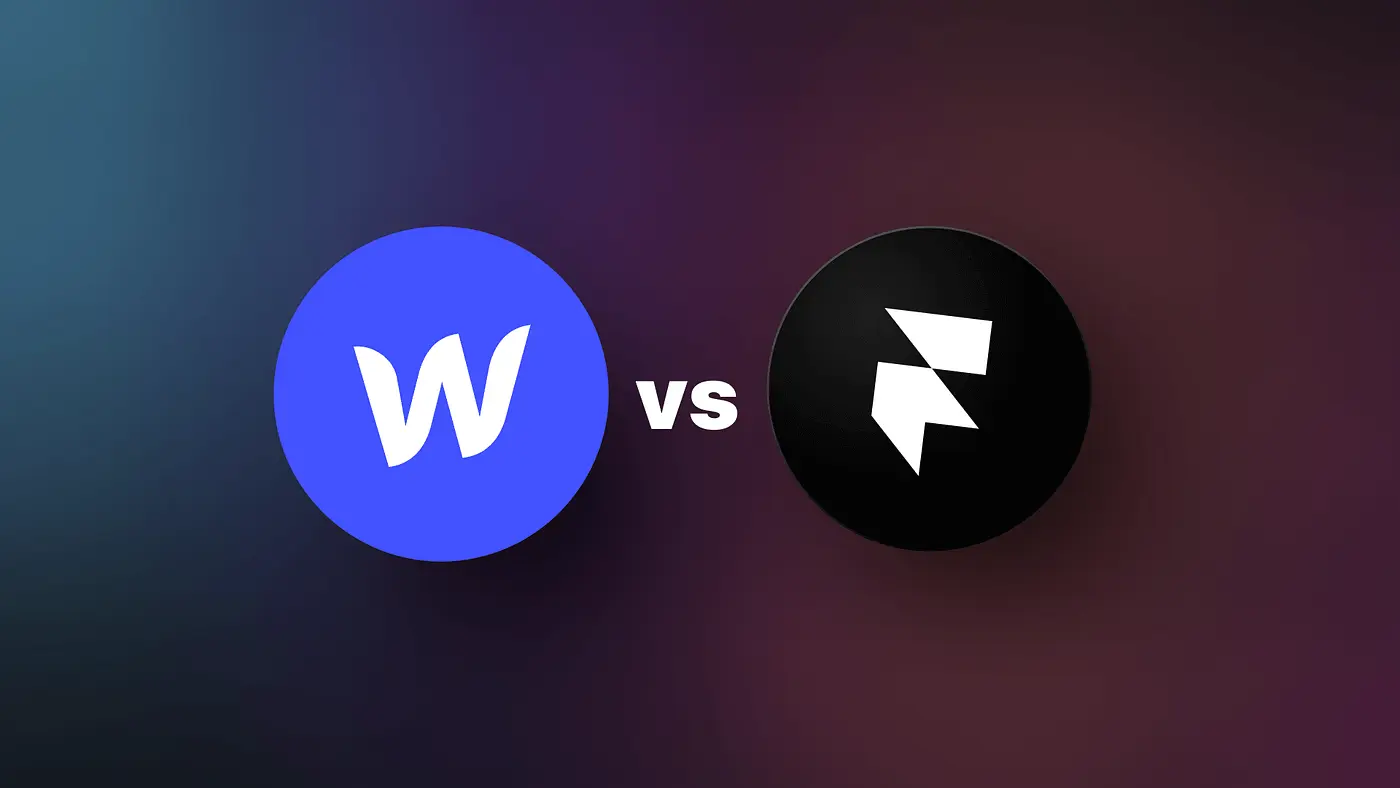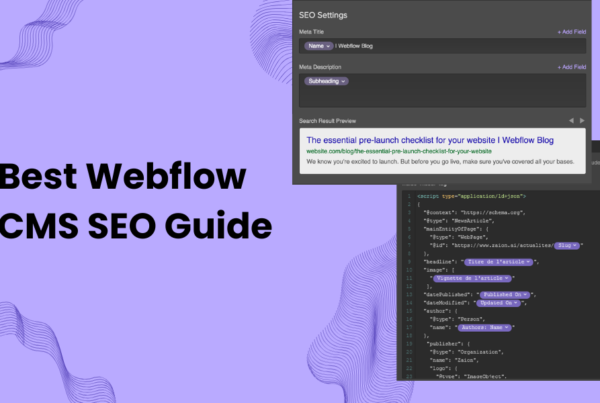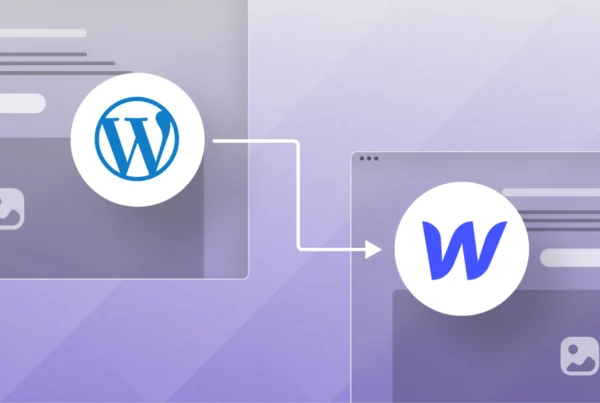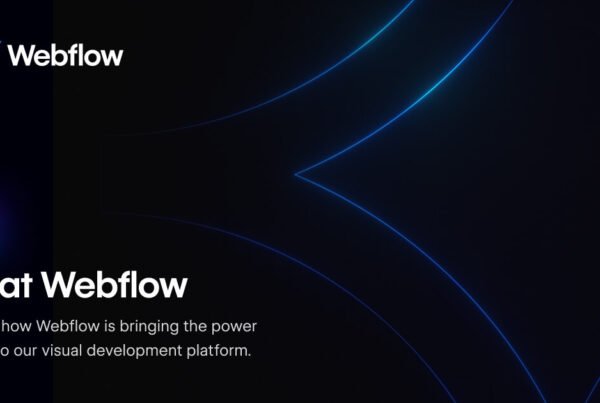
Choosing the right website builder can make or break your online presence. In 2025, two platforms dominate the no-code website building space: Framer and Webflow. Both offer powerful visual editors and professional features, but they cater to different audiences and use cases.
This comprehensive comparison will help you understand which platform suits your needs, whether you’re a designer, developer, or business owner looking to create stunning websites without coding.
What is Webflow?
Webflow is a comprehensive web design platform that combines visual design with powerful development capabilities. Since its launch in 2013, it has evolved into a robust solution for creating responsive websites, complete with hosting, CMS, and e-commerce functionality.
Key Webflow Features:
- Visual CSS Editor: Precise control over styling and layout
- Powerful CMS: Advanced content management with custom fields
- E-commerce Platform: Built-in online store capabilities
- Clean Code Generation: Semantic HTML and CSS output
- Advanced Animations: Timeline-based interaction controls
What is Framer?
Originally a prototyping tool, Framer has transformed into a full-featured website builder in 2025. It maintains its design-first philosophy while offering the capabilities needed to create production-ready websites.
Key Framer Features:
- Figma-like Interface: Familiar canvas-based design environment
- No-code Animations: Easy-to-create interactive elements
- Real-time Collaboration: Multiple team members can work simultaneously
- AI-powered Tools: Automated site generation and optimization
- Built-in Performance Optimization: Automatic Core Web Vitals optimization
Feature-by-Feature Comparison
Design and User Interface
Webflow Interface:
- Professional development-oriented layout
- Multiple panels and detailed settings
- Steeper learning curve, but more control
- Class-based styling system similar to CSS
Framer Interface:
- Clean, designer-friendly canvas
- Figma-inspired tools and workflows
- Intuitive for designers transitioning from design tools
- Freeform layout without rigid constraints
Winner: Framer for ease of use, Webflow for advanced control
Content Management System (CMS)
Webflow CMS:
- Up to 10,000 CMS items on the Business plan
- Advanced field types and relationships
- Reference and multi-reference fields
- Complex content structures are possible
Framer CMS:
- 10 CMS collections with 10,000 items
- Simpler but effective content management
- Growing feature set with regular updates
- Better for straightforward content needs
Winner: Webflow for complexity and scalability
SEO Capabilities
Webflow SEO:
- Advanced meta tag customization
- Automatic XML sitemap generation
- Clean, semantic code output
- Advanced schema markup options
- Built-in site speed optimization
Framer SEO:
- Basic meta titles and descriptions
- Automatic performance optimization
- Built-in Core Web Vitals optimization
- Less granular control than Webflow
Winner: Webflow for comprehensive SEO tools
Animation and Interactions
Webflow Animations:
- Timeline-based animation editor
- Complex interaction triggers
- Custom CSS and JavaScript integration
- More technical approach to animations
Framer Animations:
- No-code animation creation
- Spring physics and smooth transitions
- Component-based interactions
- More intuitive for designers
Winner: Framer for ease of creation, Webflow for complexity
Pricing Comparison 2025
Webflow Pricing:
- Basic: $18/month (billed annually)
- CMS: $29/month
- Business: $39/month
- Enterprise: Custom pricing
Framer Pricing:
- Mini: $5/month
- Basic: $15/month
- Pro: $30/month
- Business: Custom pricing
Winner: Framer offers more affordable entry-level plans
E-commerce Capabilities
Webflow E-commerce:
- Full online store functionality
- Product variants and inventory management
- Custom checkout experiences
- Advanced e-commerce analytics
Framer E-commerce:
- Currently, limited e-commerce features
- No dedicated e-commerce plans
- Basic product showcase capabilities
Winner: Webflow dominates e-commerce functionality
Performance and Hosting
Webflow Performance:
- AWS-powered hosting
- Global CDN included
- Automatic image optimization
- 99.99% uptime SLA
Framer Performance:
- Optimized for Core Web Vitals
- Automatic performance optimization
- Fast loading times out of the box
- Built-in speed optimization
Winner: Tie – both offer excellent performance
Who Should Choose Which Platform?
Choose Webflow If:
- You need advanced CMS functionality
- E-commerce is a priority
- You want granular SEO control
- Your team has web development knowledge
- You’re building complex, content-heavy sites
Choose Framer If:
- You’re coming from Figma or similar design tools
- Quick turnaround times are important
- You prioritize design and animations
- Budget is a primary concern
- You want real-time collaboration features
Learning Curve Comparison
Webflow Learning Curve:
- Requires understanding of web development concepts
- Extensive documentation and Webflow University
- Active community support
- Takes weeks to months to master
Framer Learning Curve:
- Familiar to designers using Figma/Sketch
- Intuitive interface reduces learning time
- Growing documentation library
- Can be productive within days
SEO Performance in 2025
Both platforms can create SEO-friendly websites, but with different approaches:
Webflow SEO Advantages:
- Complete control over technical SEO elements
- Advanced structured data options
- Custom code insertion capabilities
- Professional-grade optimization tools
Framer SEO Advantages:
- Automatic performance optimization
- Built-in Core Web Vitals compliance
- Simplified SEO setup process
- Good baseline optimization without configuration
Migration and Flexibility
Webflow:
- Export clean HTML/CSS code
- Easier migration to custom solutions
- More vendor independence
Framer:
- Limited export options
- Higher vendor lock-in
- Figma integration for design assets
Integration Capabilities
Webflow Integrations:
- 1,000+ third-party integrations
- Zapier connectivity
- Custom API access
- Extensive app marketplace
Framer Integrations:
- Growing integration library
- Essential tools covered
- API access available
- Focus on design and marketing tools
Real-World Use Cases
Webflow Excels For:
- Agency websites with complex requirements
- E-commerce stores and marketplaces
- Content-heavy sites like blogs and magazines
- Corporate websites needing custom functionality
Framer Excels For:
- Portfolio and creative showcase sites
- Landing pages and marketing sites
- Startup MVPs and product launches
- Interactive presentations and demos
Future Outlook and Updates
Both platforms continue evolving rapidly in 2025:
Webflow Updates:
- Enhanced AI features
- Improved collaboration tools
- Advanced e-commerce capabilities
- Better mobile editing experience
Framer Updates:
- Expanded CMS functionality
- More integration options
- Enhanced collaboration features
- Improved developer tools
Making Your Decision
Consider these factors when choosing between Framer and Webflow:
- Technical Expertise: Framer for designers, Webflow for those comfortable with web concepts
- Project Complexity: Simple sites favor Framer, complex projects need Webflow
- Budget Constraints: Framer offers more affordable starting points
- Timeline: Framer enables faster launches, and Webflow requires more setup time
- Long-term Needs: Consider scalability and feature requirements
FAQs
Are Webflow templates free?
Webflow offers limited free templates in its marketplace, but premium templates cost $24-$79. Free templates have basic designs suitable for learning. Paid templates offer advanced interactions, CMS integration, and professional designs. Many third-party designers sell templates ranging from $50-$200+. Consider templates as time-saving investments rather than costs, especially for client projects.
What are Webflow websites?
Webflow websites are responsive, professional sites built using Webflow’s visual design platform. They feature clean code, fast loading speeds, built-in SEO optimization, and responsive design. Sites can include static pages, dynamic CMS content, e-commerce functionality, and custom interactions. Popular for portfolios, business sites, landing pages, and marketing websites requiring custom design without coding.
What are Webflow components?
Webflow components are reusable design elements that maintain consistency across projects. Create buttons, cards, navigation menus, or entire sections as components. Update the master component to automatically update all instances. Components speed up design workflow, ensure consistency, and simplify maintenance. They’re essential for design systems and team collaboration.
What are Webflow projects?
Webflow projects are individual websites within your Webflow account. Each project contains pages, CMS collections, assets, and design elements for one website. Projects can be published to Webflow hosting or exported as code. Different hosting plans support varying numbers of projects. Think of projects as separate website folders within your Webflow workspace.
Conclusion
Both Framer and Webflow are excellent website builders in 2025, but they serve different audiences and use cases. Webflow remains the superior choice for complex websites, e-commerce stores, and projects requiring advanced customization. Its powerful CMS, SEO tools, and development-friendly approach make it ideal for professional web projects.
Framer excels as a designer-friendly platform that prioritizes speed, ease of use, and beautiful animations. It’s perfect for creative professionals, startups, and anyone who values quick turnaround times over advanced functionality.
Your choice should align with your specific needs, technical comfort level, and project requirements. Consider starting with Framer’s free plan or Webflow’s trial to experience both platforms before making your final decision.
The website building landscape continues evolving, and both platforms are well-positioned to meet the demands of modern web design in 2025 and beyond.


